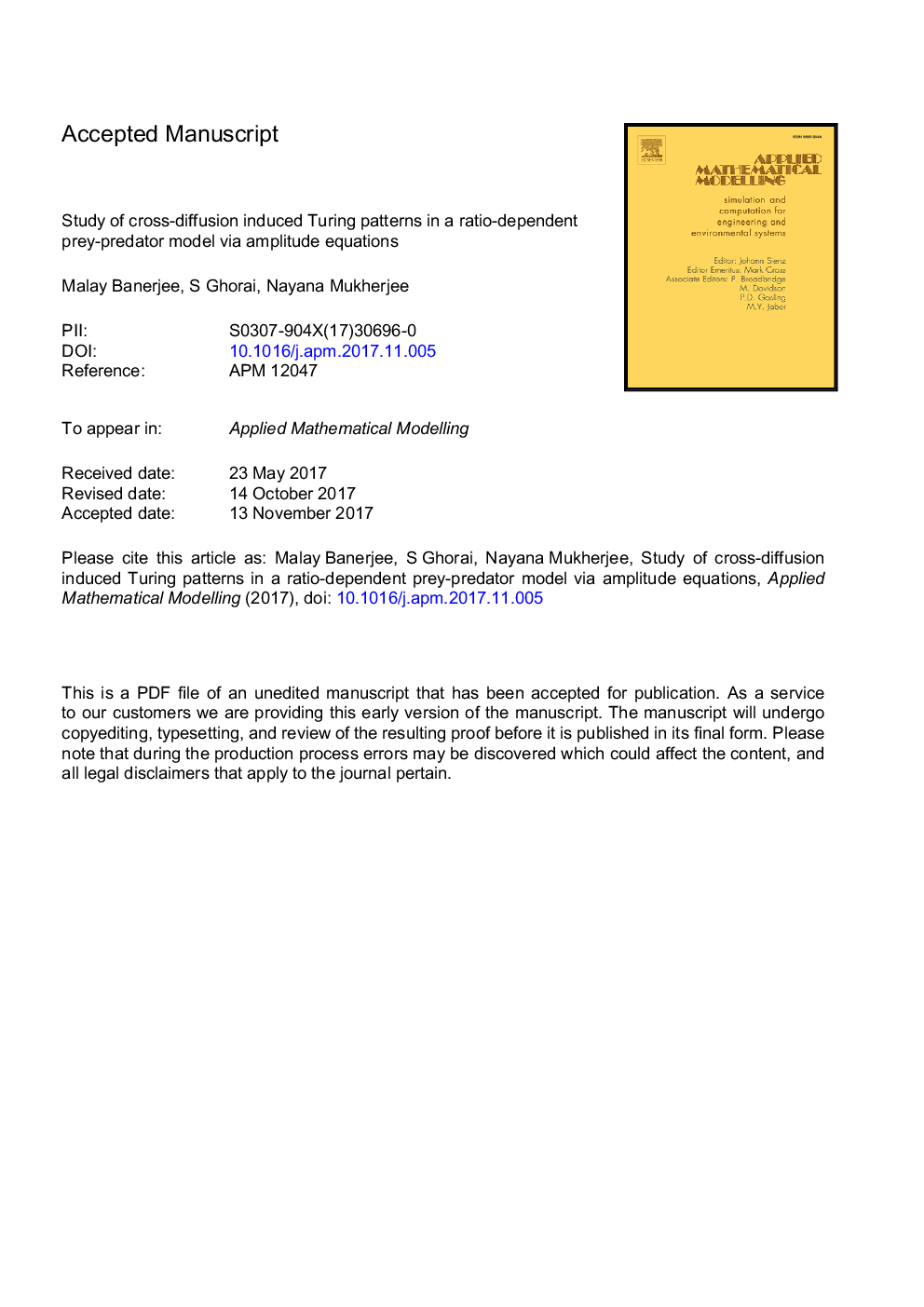| Article ID | Journal | Published Year | Pages | File Type |
|---|---|---|---|---|
| 8051995 | Applied Mathematical Modelling | 2018 | 40 Pages |
Abstract
Cross-diffusion models the situation where the presence, absence or abundance of one species of population affects the movement of other species of population in the domain under consideration and vice versa. Inclusion of cross-diffusion terms makes the modeling approach more realistic and shows significant impact on the spatio-temporal pattern formation scenario. In this paper, cross-diffusion is considered in a prey-predator model with ratio-dependent functional response, in addition to self-diffusion. Weakly nonlinear analysis is used near the Turing bifurcation boundary to derive the amplitude equations. From the stability analysis of the amplitude equations, conditions for emergence of Turing patterns such as cold spot, hot spot, mixture of spots and stripes and labyrinthine are identified. The analytical results are then verified with the help of numerical simulations. Results are general in nature and can be used to study the effect of cross-diffusion on other prey predator models both analytically and numerically.
Keywords
Related Topics
Physical Sciences and Engineering
Engineering
Computational Mechanics
Authors
Malay Banerjee, S Ghorai, Nayana Mukherjee,
